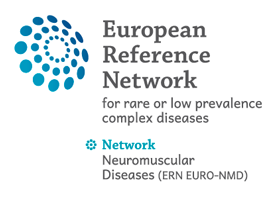09 Mar 2020
Neuromuscular tetanic hyperexcitability syndrome associated to a heterozygous Kv1.1 N255D mutation with normal serum magnesium levels
Authors:
Francesca Bianchi, Costanza Simoncini, Raffaella Brugnoni, Giulia Ricci, Gabriele Siciliano
Mutations of the main voltage-gated K channel members Kv1.1 are linked to several clinical conditions, such as periodic ataxia type 1, myokymia and seizure disorders. Due to their role in active magnesium reabsorption through the renal distal convoluted tubule segment, mutations in the KCNA1 gene encoding for Kv1.1 has been associated with hypomagnesemia with myokymia and tetanic crises. Here we describe a case of a young female patient who came to our attention for a history of muscular spasms, tetanic episodes and muscle weakness, initially misdiagnosed for fibromyalgia. After a genetic screening she was found to be carrier of the c.736A > G (p.Asn255Asp) mutation in KCNA1, previously described in a family with autosomal dominant hypomagnesemia with muscular spasms, myokymia and tetanic episodes. However, our patient has always presented normal serum and urinary magnesium values, whereas she was affected by hypocalcemia. Calcium supplementation gave only partial clinical benefit, with an improvement on tetanic episodes yet without a clinical remission of her spasms, whereas magnesium supplementation worsened her muscular symptomatology

